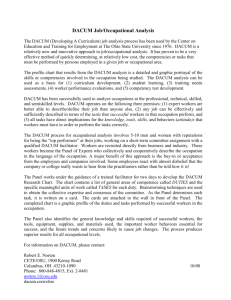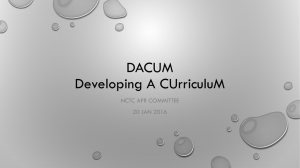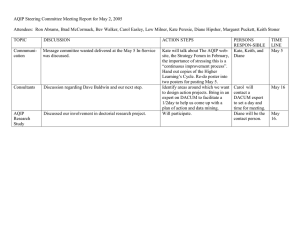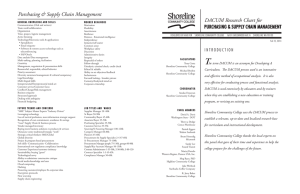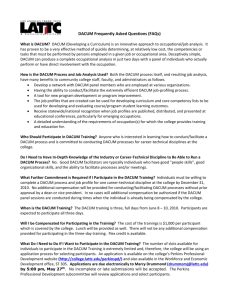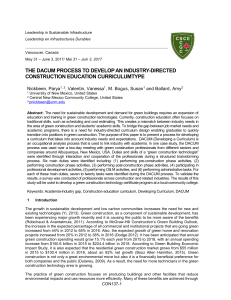The DACUM Dynamic 5 - UNESCO
advertisement
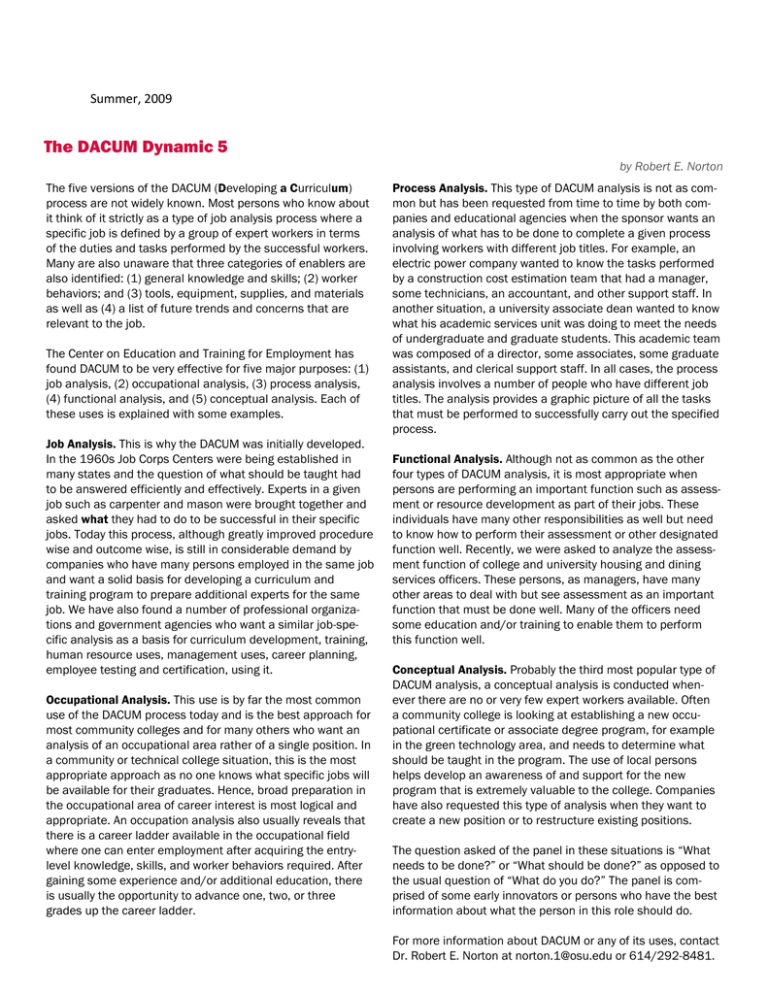
Summer, 2009 The DACUM Dynamic 5 by Robert E. Norton The five versions of the DACUM (Developing a Curriculum) process are not widely known. Most persons who know about it think of it strictly as a type of job analysis process where a specific job is defined by a group of expert workers in terms of the duties and tasks performed by the successful workers. Many are also unaware that three categories of enablers are also identified: (1) general knowledge and skills; (2) worker behaviors; and (3) tools, equipment, supplies, and materials as well as (4) a list of future trends and concerns that are relevant to the job. The Center on Education and Training for Employment has found DACUM to be very effective for five major purposes: (1) job analysis, (2) occupational analysis, (3) process analysis, (4) functional analysis, and (5) conceptual analysis. Each of these uses is explained with some examples. Job Analysis. This is why the DACUM was initially developed. In the 1960s Job Corps Centers were being established in many states and the question of what should be taught had to be answered efficiently and effectively. Experts in a given job such as carpenter and mason were brought together and asked what they had to do to be successful in their specific jobs. Today this process, although greatly improved procedure wise and outcome wise, is still in considerable demand by companies who have many persons employed in the same job and want a solid basis for developing a curriculum and training program to prepare additional experts for the same job. We have also found a number of professional organizations and government agencies who want a similar job-specific analysis as a basis for curriculum development, training, human resource uses, management uses, career planning, employee testing and certification, using it. Occupational Analysis. This use is by far the most common use of the DACUM process today and is the best approach for most community colleges and for many others who want an analysis of an occupational area rather of a single position. In a community or technical college situation, this is the most appropriate approach as no one knows what specific jobs will be available for their graduates. Hence, broad preparation in the occupational area of career interest is most logical and appropriate. An occupation analysis also usually reveals that there is a career ladder available in the occupational field where one can enter employment after acquiring the entrylevel knowledge, skills, and worker behaviors required. After gaining some experience and/or additional education, there is usually the opportunity to advance one, two, or three grades up the career ladder. Process Analysis. This type of DACUM analysis is not as common but has been requested from time to time by both companies and educational agencies when the sponsor wants an analysis of what has to be done to complete a given process involving workers with different job titles. For example, an electric power company wanted to know the tasks performed by a construction cost estimation team that had a manager, some technicians, an accountant, and other support staff. In another situation, a university associate dean wanted to know what his academic services unit was doing to meet the needs of undergraduate and graduate students. This academic team was composed of a director, some associates, some graduate assistants, and clerical support staff. In all cases, the process analysis involves a number of people who have different job titles. The analysis provides a graphic picture of all the tasks that must be performed to successfully carry out the specified process. Functional Analysis. Although not as common as the other four types of DACUM analysis, it is most appropriate when persons are performing an important function such as assessment or resource development as part of their jobs. These individuals have many other responsibilities as well but need to know how to perform their assessment or other designated function well. Recently, we were asked to analyze the assessment function of college and university housing and dining services officers. These persons, as managers, have many other areas to deal with but see assessment as an important function that must be done well. Many of the officers need some education and/or training to enable them to perform this function well. Conceptual Analysis. Probably the third most popular type of DACUM analysis, a conceptual analysis is conducted whenever there are no or very few expert workers available. Often a community college is looking at establishing a new occupational certificate or associate degree program, for example in the green technology area, and needs to determine what should be taught in the program. The use of local persons helps develop an awareness of and support for the new program that is extremely valuable to the college. Companies have also requested this type of analysis when they want to create a new position or to restructure existing positions. The question asked of the panel in these situations is “What needs to be done?” or “What should be done?” as opposed to the usual question of “What do you do?” The panel is comprised of some early innovators or persons who have the best information about what the person in this role should do. For more information about DACUM or any of its uses, contact Dr. Robert E. Norton at norton.1@osu.edu or 614/292-8481.
